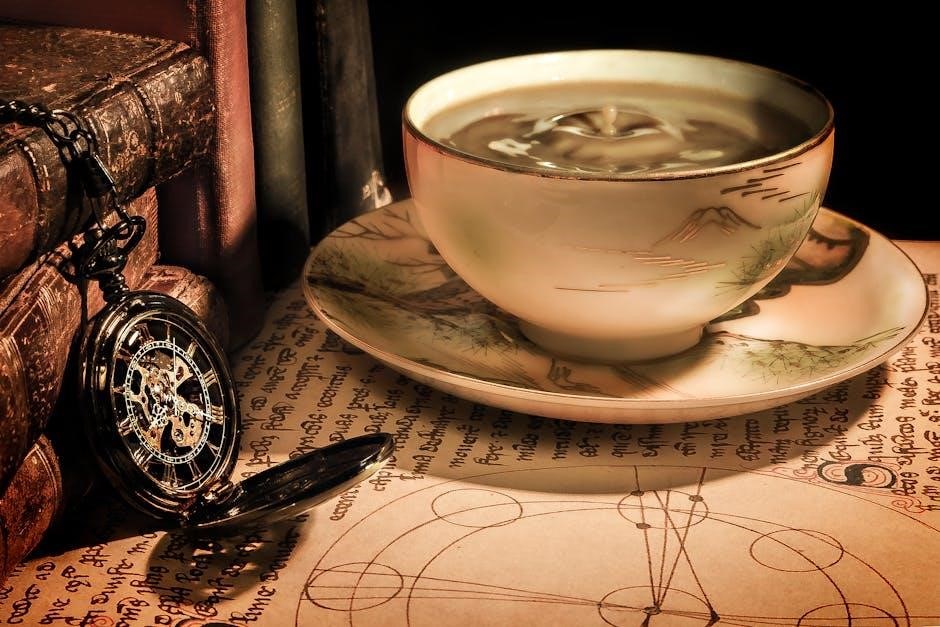There Was an Old Lady Who Swallowed Some Books by Lucille Colandro is a playful twist on the classic tale, promoting literacy and humor for early learners.

Overview of the Book
There Was an Old Lady Who Swallowed Some Books is a charming and engaging children’s book written by Lucille Colandro. This playful twist on the classic “There Was an Old Lady Who Swallowed a Fly” series delights readers with its unique storyline. The old lady’s quirky habit of swallowing various items, this time related to books and learning, creates a fun and humorous narrative. The story follows her as she swallows books, pens, pencils, and other school-related objects, leading to a series of silly and unexpected events. The book is designed to promote literacy and a love for reading, making it perfect for early childhood education. Its rhyming text and repetitive structure make it interactive and easy to follow, while the absurdity of the situations adds a layer of humor that children adore. The book also serves as a creative tool for teachers to engage students in storytelling and sequencing activities.
Historical Context and Development
The origins of There Was an Old Lady Who Swallowed Some Books trace back to the traditional nursery rhyme “There Was an Old Lady Who Swallowed a Fly.” This classic song, believed to have emerged in the 19th century, became a beloved children’s tune, known for its absurdity and repetitive structure. Over time, authors like Lucille Colandro reimagined the concept, adapting it to various themes. Colandro’s version, published in 2012, shifts the focus to books and educational items, aligning with the growing emphasis on literacy in early childhood education. The book’s development reflects a broader trend in children’s literature to create engaging, humorous stories that also serve educational purposes. By maintaining the original rhyme scheme while introducing new elements, Colandro successfully crafted a modern classic that resonates with both children and educators, ensuring its place in the evolving tradition of the series.

The Plot and Themes
The old lady’s absurd actions drive the story, as she swallows books, pens, and rulers, creating a chain of humorous events. Themes include literacy, learning, and playful nonsense, making it engaging for young readers.
The Old Lady’s Unique Habit
The old lady’s peculiar habit of swallowing items sets the story in motion, showcasing her unconventional approach to problem-solving. Her actions escalate humorously, from swallowing books to pens and rulers, creating a chain of absurd events. This quirky behavior highlights her creativity and determination, making her a memorable character. The habit not only drives the plot but also serves as a catalyst for exploring themes of literacy and learning. Each swallowed item connects to the next, forming a narrative that is both entertaining and educational. The old lady’s unique habit sparks curiosity and engages young readers, encouraging them to think creatively about the consequences of her actions.
Themes of Literacy and Learning
There Was an Old Lady Who Swallowed Some Books emphasizes the importance of literacy through its playful narrative. The old lady’s quirky habit of swallowing books, pens, and rulers highlights the tools essential for learning, making the story a fun way to introduce young readers to the concept of education. The book encourages children to view reading and writing as exciting and necessary skills. By incorporating a sequence of swallowed items, the story promotes problem-solving and creativity, while also reinforcing the idea that learning is an adventurous journey. The themes of literacy and learning are woven into the humor, creating an engaging and educational experience for early childhood readers. This approach makes the book a valuable resource for fostering a love for reading and learning in young minds.
Humor and Nonsense in the Story
There Was an Old Lady Who Swallowed Some Books is filled with absurdity and humor, making it a delightful read for children. The old lady’s ridiculous habit of swallowing books, pens, and even a desk creates a comical scenario that captivates young readers. Each swallowed item leads to a more absurd situation, such as swallowing a rose or candy, which adds to the nonsense. The repetitive structure of the story, with its escalating sequence of swallowed objects, builds humor and keeps readers engaged. The old lady’s illogical actions, like swallowing hay to feed a cow or an egg to sweeten it, add layers of silliness. This playful and nonsensical approach makes the story a joyous experience, encouraging children to laugh and explore the world of imagination. The humor is both entertaining and educational, blending fun with learning.

Characters and Development
The story revolves around the Old Lady, whose quirky habit of swallowing objects drives the narrative. Supporting characters, though minimal, play roles that enhance her eccentric journey and humor.
The Old Lady as the Main Character
The Old Lady is the central figure in There Was an Old Lady Who Swallowed Some Books, showcasing her unique and humorous approach to problem-solving. Her relentless appetite for swallowing items, from books to candy, creates a whimsical narrative that captivates readers. This eccentric character’s actions drive the story’s plot, making her both intriguing and memorable. Her quirky behavior not only adds to the story’s humor but also serves as a creative way to engage children with literacy and sequencing. The Old Lady’s character development is subtle yet effective, as her swallowing spree leads to unexpected consequences, keeping the audience entertained and curious about her next move. Her role emphasizes the importance of creativity and the unpredictable nature of her decisions, making her a standout character in children’s literature.
Supporting Characters and Their Roles
In There Was an Old Lady Who Swallowed Some Books, the supporting characters play a crucial role in advancing the story and highlighting the Old Lady’s quirky nature. These characters are the items she swallows, such as books, eggs, candy, and hay, each serving a unique purpose. The books symbolize literacy and learning, while the egg and candy add humor and whimsy. The hay, for instance, is swallowed to feed a cow, showcasing her creative problem-solving. These characters not only drive the plot but also engage young readers with their absurdity and charm. They help illustrate the Old Lady’s determination and the unexpected consequences of her actions, making the story both entertaining and educational. The interaction between the Old Lady and these swallowed items creates a lively and engaging narrative that captivates children and encourages them to think creatively about storytelling and problem-solving.

Educational and Classroom Applications
There Was an Old Lady Who Swallowed Some Books is widely used in early childhood education to promote literacy and engage young learners through its playful and repetitive structure.
Using the Book in Early Childhood Education
There Was an Old Lady Who Swallowed Some Books is a popular choice for early childhood education due to its engaging and repetitive structure, which supports phonological awareness and sequencing skills. The story’s humor and nonsense themes captivate young learners, making it an excellent tool for fostering a love for reading. Educators often use the book to teach cause-and-effect relationships and vocabulary building. Activities such as sequencing the items the old lady swallows encourage critical thinking and storytelling abilities. The book is also ideal for shared reading experiences, where students can predict outcomes and participate actively. Additionally, its themes align with classroom routines, making it a great resource for back-to-school activities. The availability of supplementary materials, such as puppets and visual aids, further enhances its educational value, providing interactive and creative learning opportunities for students.
Activities and Lesson Plans Inspired by the Book
There Was an Old Lady Who Swallowed Some Books inspires a variety of engaging activities for young learners. One popular activity involves sequencing pictures of the items the old lady swallows, helping students practice narrative order and storytelling skills. Educators often create visual question sheets to assess comprehension and encourage critical thinking. Additionally, crafting projects, such as making puppets of the old lady and the items she swallows, allow students to creatively retell the story. Teachers also incorporate writing exercises where students predict what the old lady will swallow next, fostering imaginative writing skills. These activities align with literacy goals and promote active participation, making the book a versatile tool for dynamic and interactive learning experiences in the classroom.
sequencing and Storytelling Exercises
Sequencing and Storytelling Exercises
Sequencing and storytelling exercises are central to engaging young learners with There Was an Old Lady Who Swallowed Some Books. These activities encourage students to arrange events in order, fostering narrative comprehension. Teachers often provide pictures or words representing the items the old lady swallows, asking students to match and sequence them. This helps develop memory and storytelling skills. Students can also predict what the old lady will swallow next, sparking creative thinking. Additionally, sharing their own versions of the story in small groups enhances collaboration and public speaking. These exercises are ideal for early childhood education, as they blend fun with learning, ensuring students grasp sequencing while enjoying the humorous tale. Such interactive approaches make the book a valuable resource for fostering both literacy and creativity in the classroom.

Cultural and Social Impact
There Was an Old Lady Who Swallowed Some Books has become a beloved twist on a classic tale, fostering a love for reading and humor across generations and classrooms.
Comparison to the Original “There Was an Old Lady Who Swallowed a Fly”
While the original tale of the old lady who swallowed a fly is a beloved classic, There Was an Old Lady Who Swallowed Some Books offers a fresh and educational twist. In the original story, the old lady’s antics lead to a series of absurd and humorous consequences, often ending in a surprising conclusion. In contrast, the book version focuses on her swallowing items related to literacy and learning, such as books, pencils, and eggs, to create a fun narrative that emphasizes the importance of reading and education. This adaptation retains the playful rhythm and rhyme scheme of the original but shifts the theme to align with educational goals, making it a valuable resource for classrooms and early childhood development. The comparison highlights how the story has evolved to suit modern educational needs while maintaining its entertainment value.
Reception and Reviews of the Book
There Was an Old Lady Who Swallowed Some Books has been widely praised for its creative twist on the classic tale, blending humor with educational themes. Teachers and parents alike appreciate its engaging rhythm and repetitive structure, which make it ideal for early childhood education; The book’s focus on literacy and learning has resonated with educators, who value its ability to inspire a love for reading in young students. Reviews highlight the story’s lighthearted and nonsensical humor, which keeps children entertained while promoting critical thinking through sequencing activities. The availability of the book in PDF format has also been commended for its convenience, allowing easy access for classroom use and home reading. Overall, the book has become a beloved resource for fostering both literacy skills and a joy for storytelling in children.

Resources and Downloads
Find the PDF version of There Was an Old Lady Who Swallowed Some Books online for easy access. Supplementary materials, including worksheets and activity guides, are also available for download.
Where to Find the PDF Version
Supplementary Materials and Worksheets
Various educational platforms offer supplementary materials and worksheets to complement There Was an Old Lady Who Swallowed Some Books. These resources include sequencing activities, visual question sheets, and puppets for interactive storytelling. Websites like theautismhelper.com and sherlockcenter.ric.edu provide downloadable PDFs of these materials. Teachers and parents can use these tools to engage students in literacy and creative learning. The puppets and sequencing pictures help students retell the story and understand the sequence of events. Additionally, some sites offer free printables, such as cut-out pictures of the old lady and the items she swallows, which can be used for classroom activities. These materials are designed to enhance the learning experience and make the story more engaging for young readers. They are perfect for early childhood education and can be easily incorporated into lesson plans.
There Was an Old Lady Who Swallowed Some Books is a charming story that delights readers with its humor and creativity. It celebrates literacy and learning while inspiring further exploration of similar tales.
Final Thoughts on the Book’s Significance
There Was an Old Lady Who Swallowed Some Books stands out as a captivating tale that blends humor with educational value. Its unique storyline and repetitive structure make it an excellent tool for engaging young readers and fostering a love for literacy. The book’s ability to connect with children through its playful nonsense while subtly promoting sequencing and storytelling skills is a testament to its educational significance. Additionally, its adaptability into various classroom activities and lesson plans further enhances its value as a versatile resource for teachers. Overall, the book’s enduring popularity lies in its ability to entertain and educate, making it a beloved addition to early childhood education and home libraries alike.
Encouragement for Further Reading and Exploration
There Was an Old Lady Who Swallowed Some Books invites readers to explore more stories in the series, such as There Was an Old Lady Who Swallowed a Fly and There Was an Old Lady Who Swallowed a Shell. These books offer similar themes of humor and creativity, encouraging children to develop a passion for reading. Parents and educators can use these tales to create engaging lesson plans, fostering both literacy and imaginative thinking. The availability of supplementary materials, such as worksheets and sequencing exercises, further enhances the learning experience. By diving into these stories, young readers can build a strong foundation for future academic success while enjoying the whimsical adventures of the old lady.